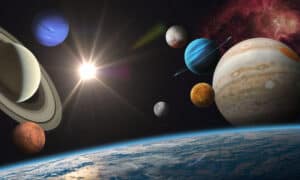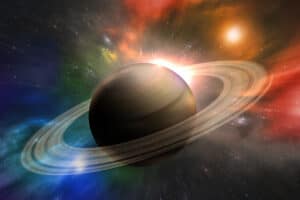Mercury is the planet that is closest to the sun in the solar system, and also the smallest of the seven planets, measuring only slightly larger than Earth’s moon. Similar to the moon, the planet has a rugged, rocky surface covered in craters and ridges. It has no moons and an extremely thin atmosphere, or exosphere, comprised of gasses such as oxygen, sodium, helium, hydrogen, and potassium. Standing on its surface, the sun would appear three times larger than it does on Earth due to its proximity. The planet has no moons and is thought to be unsustainable for any known life forms.
Mass
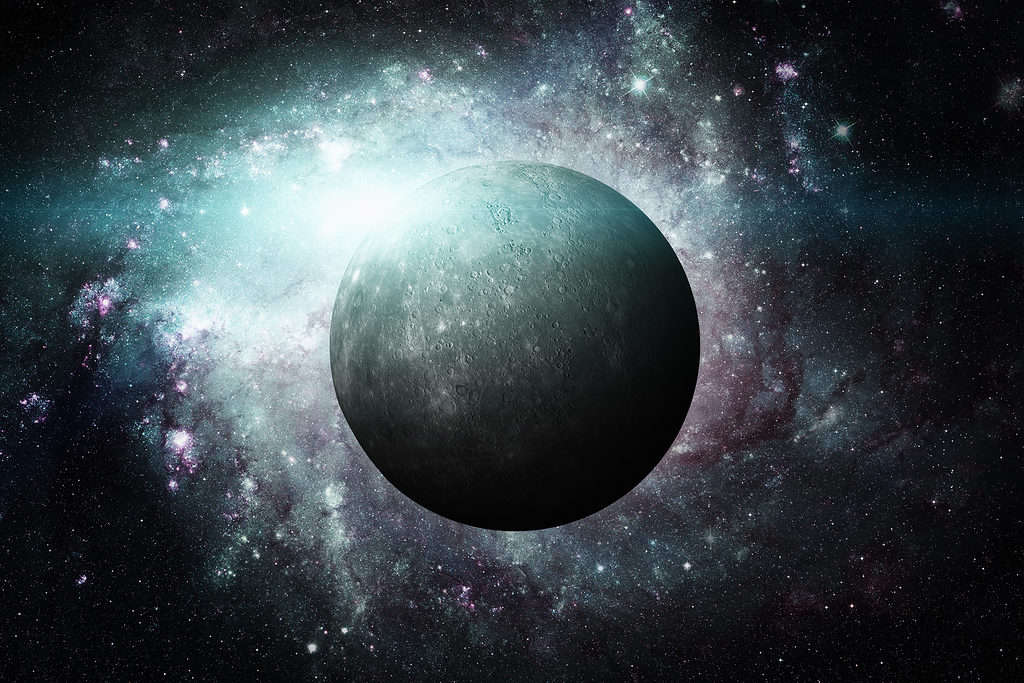
Mercury is the closest planet to the sun in the solar system. Image elements furnished by NASA.
©NASA images/Shutterstock.com
While Mercury is the smallest planet in the solar system, it still has an incredibly large mass. It has a mass of 3.3×1023 kilograms, or 7.23×1023 pounds. The planet with the mass most similar to Mercury, Mars, weighs almost double that mass at 6.42×1023 kilograms (14.10×1023 pounds).
Surface Area
Mercury has a surface area of 74,797,000 square kilometers, or 28,880,000 square miles. In comparison, Earth’s moon has only around half the surface area, measuring 37,936,694 square kilometers (14,647,439 square miles).
Diameter
From one end to another, Mercury’s diameter measures 4,878 kilometers (3,030 miles). This is by far the planet with the smallest diameter in the solar system, although it boasts a measurement almost three times that of dwarf planet Pluto, whose length is 2,370 kilometers (1,477 miles).
How Large is Mercury Compared to Earth?
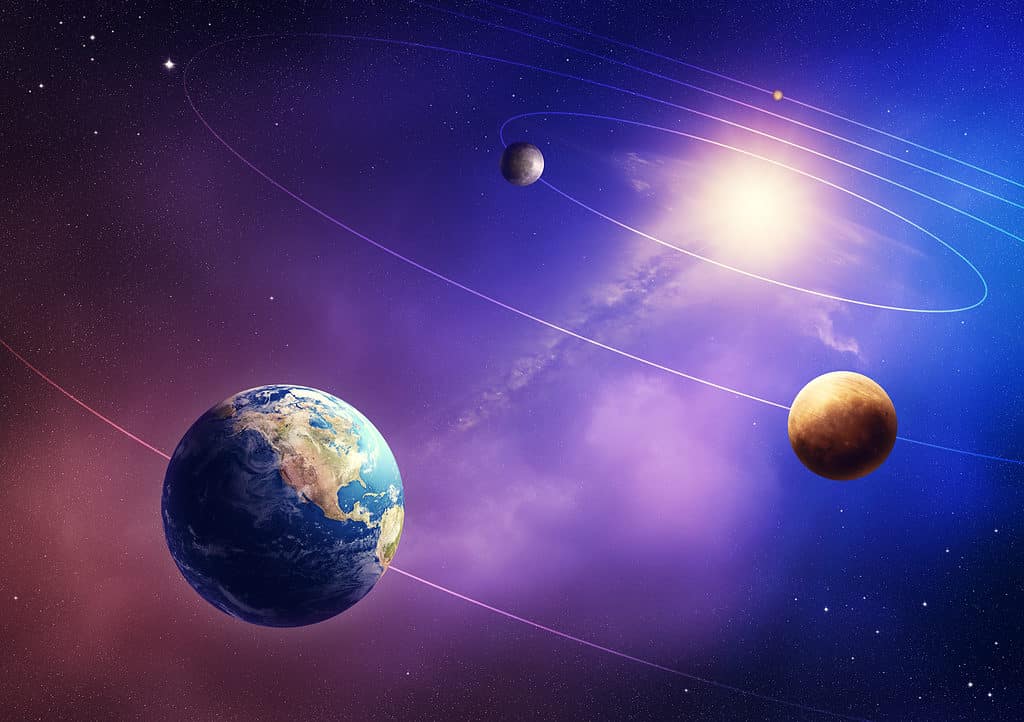
Mercury’s diameter is 38% of Earth’s; however, its volume is a mere 5.5 percent. Image elements furnished by NASA.
©Johan Swanepoel/Shutterstock.com
Mercury’s diameter is approximately 38 percent of Earth’s diameter, making it just over a third the size of Earth. However, its volume is only 5.5 percent of Earth’s volume, meaning Mercury could fit inside Earth almost 19 times. Mercury is very similar in density to Earth, measuring 5.427 grams per cubic centimeter compared to Earth’s 5.515 grams per cubic centimeter.
How Long is Mercury’s Day?
Mercury rotates at a very slow rate compared to Earth, taking an equivalent of 59 Earth days to rotate 360 degrees. However, it does not rotate on an axis like Earth, meaning that from sunrise to sunset, a day on its surface is similar to 176 days on Earth.
How Big is Mercury’s Orbit?
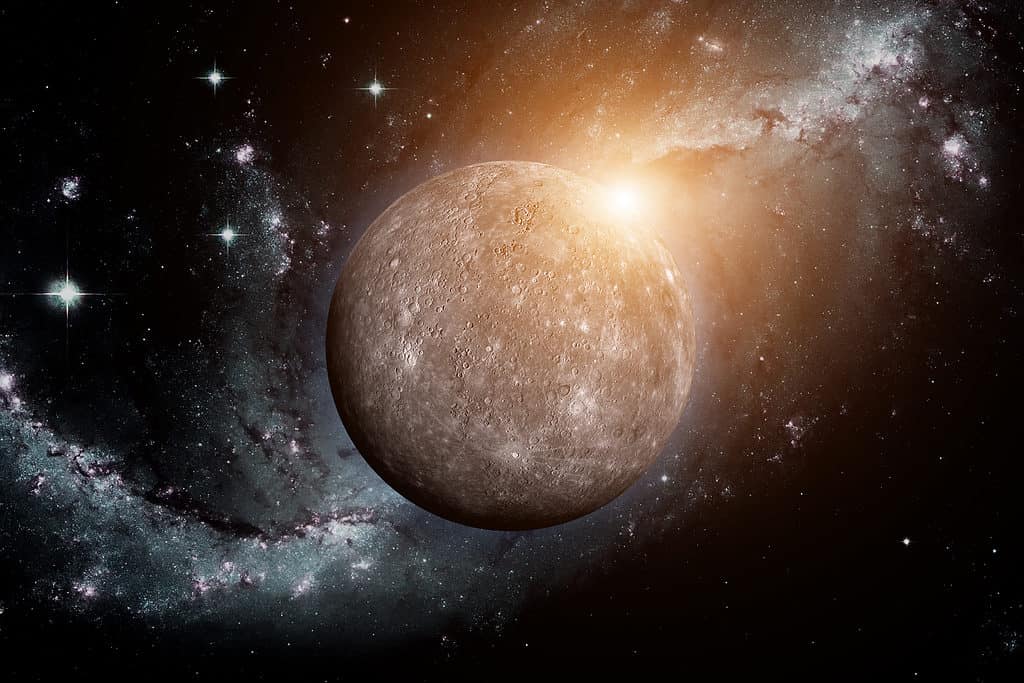
Mercury moves through space at about 29 miles per second. Image elements furnished by NASA.
©NASA images/Shutterstock.com
Throughout its 88-day orbit, Mercury reaches its closest distance from the sun at 47 million kilometers (29 million miles), and its farthest distance at 70 million kilometers (49 million miles). It travels around the sun faster than any other planet in the solar system in an egg-shaped pattern, barreling through space at 47 kilometers (29 miles) per second.
Conclusion
While it is small, desolate, and has incredibly harsh temperatures, researchers have announced that it is possible Mercury sustained prebiotic life forms at some point during its formation. Minerals in the craters on Mercury’s surface suggest that there may have been water or ice present beneath the planet’s surface at a time, allowing for the possibility of life forms.
The photo featured at the top of this post is © NASA images/Shutterstock.com
Thank you for reading! Have some feedback for us? Contact the AZ Animals editorial team.



